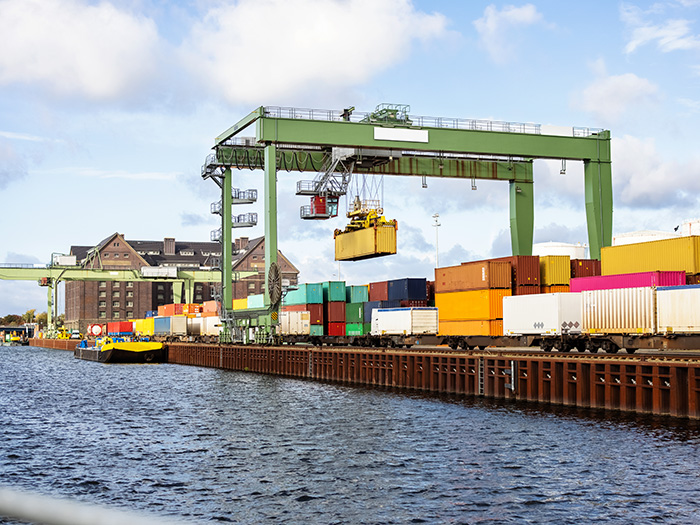Understanding the Unexpected: COVID-19, Workers’ Compensation and Complex Adaptive Systems

Looking over the last few months, it can feel rather absurd that a respiratory disease in Wuhan, China has led to such varied outcomes as a run on toilet paper in suburban Maryland or EU travel bans on United States citizens.
Looking at the world as a series of linear processes doesn’t predict these sorts of unique outcomes, but with a systems engineer’s eye we can see that the world is not a system of linear processes, but rather a “Complex Adaptive System,” where a system’s interdependencies lead to unpredictable, “emergent” properties.
What does this have to do with worker’s compensation? Although workers’ comp isn’t as complex as the world as a whole, thinking of it as a Complex Adaptive Systems can help us understand the “emergent properties” of the system — e.g., jumper claims.
Taking learnings from managing Complex Adaptive Systems, we may even find new ways of managing uncertainty in the claims process.
Understanding Complex Adaptive Systems

Dr. John C. Peters, PhD., chief science officer, Gain Life
COVID-19 began as a “medical problem” – a viral outbreak in a Chinese province, confined to that part of the world. As the virus spread within China and then to other parts of the world, this “medical problem” also became an “economic problem,” affecting manufacturing and supply chains.
Leaders reacting to the pandemic enacted policies of social distancing and sheltering in place, which led to closures of businesses leading to employment losses.
Schools and public parks were closed, sporting events, conferences, and other events were cancelled, and so on. In short, this “medical problem” quickly affected nearly every aspect of our lives.
This chain reaction from one viral outbreak illustrates how our world functions as an interconnected Complex Adaptive System (CAS), rather than a collection of linear systems in separate silos (politics, economics, manufacturing, etc.).
With interdependencies among all the systems we rely on in daily life, relationships among parties and activities within the system adapt and change when provided with different information and circumstances. When something happens in one part of a CAS, there are ripples that affect every other part of the system through the many interconnected parts, their dependencies, and feedback loops.
Outcomes of a CAS are not predictable based on characteristics of one of the individual system parts, instead they result from the interactions among the system components. These unpredictable, non-linear outcomes are a hallmark of a CAS and are called “emergent phenomena.”
When thinking about COVID-19, some “emergent phenomena” include craft breweries mass-manufacturing hand sanitizer, car companies assembling medical ventilators, and the establishment of ZOOM as a household name.
As we react to the ripple effects of the emergent properties catalyzed by COVID-19, this also gives us a model by which we can better understand workers’ comp.
Workers’ Compensation as a CAS
How can a small, seemingly minor, job-related injury lead to months of lost time? Why did this injured worker get a lawyer, while another injured worker with a much more complicated claim did not? These questions are on the forefront of everyone’s mind in the industry. When thinking about the claims process as a linear process, these outcomes are befuddling.
However, if we think of Worker’s Compensation as a CAS, it can help us think about ways to reduce some of the unexpected, “emergent” properties of the workers’ comp process.
Although each player in the comp process has duties that they’re responsible for, the success of each sector relies on the actions of the others. Someone’s recovery from a sprained ankle can be impacted by the behavior of their supervisor, the delay of a claims professional mailing a form, or from missing an appointment due to missing the bus.
It’s this interconnectedness that’s the mark of a CAS, and that’s why this model is helpful for thinking about workers comp – “creeping cat” claims are just emergent outcomes – hard to predict in a linear fashion, but emerging from the intersection of different systems.
To manage this complexity and reduce the surprise of emergent properties, we need to manage the system as an interconnected unit – not merely as a collection of roles.
Coordinating Complexity with Technology
Ironically, some of the tools we’ve been forced to use while adapting to the remote work demanded by COVID-19 may also hold the key to coordinating the complexity of the workers’ comp system.
Tools such as Zoom or Microsoft Teams have been adopted to try to help make teammates feel connected even when they’re not together in an office – you can video chat, share files, and track each other’s work, whether you’re self-quarantining down the street or a thousand miles away.

Meg O’Hare, head of product, Gain Life
Similar tools could help the different silos of the WC process also feel like they’re part of a team – to help them move in concert instead of on their separate tracks.
This transparency and connectivity could help illustrate the moments of cross-silo connection, and make it easier for any member of the process to anticipate and correct when negative emergent patterns start to arise.
With a really well-built system, the software platform itself could also help process and predict these moments, so everyone knows what to do when to keep processes running smoothly.
Let’s imagine how a well-built engagement platform might reduce these moments of cross-process friction and uncertainty:
An injured worker doesn’t like their doctor, but isn’t sure if they’re allowed to switch, based on their jurisdiction.
- Today, this usually prompts an injured worker to turn to Google, where the wildly ranging answers based on the laws of different states can cause them to feel overwhelmed, and continue seeing the doctor they dislike until they get so frustrated they start skipping their appointments.
- A software platform that has a portal for frequently asked questions and that knows in what state the worker was injured could circumvent this whole process by giving the injured worker the right answer at the right time – and could even flag this search to the case manager so that they can proactively reach out with any information about the quality of a particular doctor’s care.
A claims adjuster sees that an injured worker forgot to fill out a field on one of their forms.
- Today, the adjuster may need to play multiple rounds of voicemail-tag, re-send a paper form, and wait a week to get the corrected form back (that is, if the injured worker has a stamp and/or a fax machine).
- With a platform that has automated document delivery, they could send a note right to the injured worker explaining their error, and have a corrected document back in minutes. An injured worker hasn’t heard from their claims team in a few weeks, and isn’t sure if they’re missing any steps.
- Today, again, they return to Google, usually to find a lot of resources written by attorneys. If they’re particularly worried about following the process correctly, they might come to believe that they need an attorney to retain their benefits and hire one.
- With a workers’ comp specific engagement platform, injured workers can be given a checklist of all the steps they’re supposed to take, and when. If they’re worried they’re not on the right track, a completed checklist and some encouraging words could help them feel confident that they’re following the process correctly. A well-designed platform could even anticipate these moments, and proactively reach out to check in about how the Injured worker is feeling, making them feel supported and in control of their own process.
Working Together to Reduce “Emergent” Phenomena
As we’ve learned from the progressing COVID-19 pandemic, seemingly simple occurrences can lead to wildly unexpected outcomes when they happen within a Complex Adaptive System.
However, just like we’ve learned to adapt new technologies to help us feel connected, whether through “Zoom Happy Hours” or sharing files across continents, technology platforms can help us wrangle this complexity together.
When we recognize and highlight how our different roles and silos interact, we can try to reduce unexpected outcomes, whether it’s a jumper claim or a run on bottled water. &










